If you have ever chewed on a Sorrel leaf or stem, you’ll know exactly why the name Sorrel comes from the 12th century Anglo-French word for sour taste: ‘Sorele’.
Many sources tell us of children eating, chewing or sucking Sorrel, and I remember chewing the tangy stalks as a child myself (I still occasionally pick a stem to munch on whilst walking the dogs). When food was scarce during WWII, children used to gather Sorrel. Being rich in vitamins A and C, it was a good idea as a compliment to the sometimes meagre wartime diet.
Before lemons became more commonly available in Northern Europe in the 1600’s, Sorrel was popular in cooking recipes. For example, the Tudors ate it as a cooked vegetable or made it into a green sauce to go with white fish, pork or goose. They also frequently used Sorrel in salads.
Many of our favourite old herbalists had thoughts on Sorrel, either for cooking or for medicinal benefits.
John Gerard (1545-1612) preferred to eat it, cooked as one would for a spinach tart, and praised its use in ‘summer sauces’ for a variety of different meats. As a bonus he reckoned it was good for the liver and cooling the stomach.
Culpeper (1616-1654) too, recommends it in salads for flavour, but mainly to prevent scurvy. At home, we regularly add a few sorrel leaves to our salads. It tastes great and in addition we haven’t had scurvy recently!
Five hundred years earlier, Hildegard von Bingen, (1098 -1179), Benedictine abbess, medical writer, philosopher and composer (you can still listen to her music today), was less impressed with Sorrel. She found it useful as animal food but not so much for people:
If a person should eat it, it would make him sad and diffuse that quality in excessive measure throughout his internal organs.
Similarly in 1991 in Roy Vickery’s Dictionary of Plant-lore, a local from Devon warns:
It’ll make ‘ee bad if ‘ee eats too much.
Albertus Magnus (c.1200-1280) quoted Claudius Galenus, better known as Galen (129-216 AD), Greek physician, writer, and philosopher, in his book “The Book of Secrets of Albertus Magnus’:
When the leaves of Sorrel be eaten, they loose the belly.
Could Sorrel be an ancient slimming supplement? Or does Galen mean ‘it’ll make ‘ee bad’? Either way, I still like it in salads. Unfortunately, so far it hasn’t made me any slimmer. But on the upside, it hasn’t made me ‘bad’ either.
Rumex (latin) means lance, dagger or skewer describing the shape of the leaves. Although some think, Rumex comes from the Greek word for stream, ‘Rhyma’. Sorrel likes to grow in damp places.
Acetosa comes from the Latin word Acetum, meaning vinegar.
Other names for Sorrel are: Cuckoo’s-meate, sour dogs, sour ducks, spinach dock, sooricks, sour dock, souring and sweetings, crabs and sweet apples. Most of the names refer to the sour taste of the plant. It’s the same in other languages, for example Veldzuring (Sour thing in a field) in Dutch, Sauerampfer (sour dock) in German, Oseille (from Latin Acidula meaning sour) in French, Ängssyra in Swedish, Engsyre in Norwegian and Almindelg syre in Denmark, all meaning sour thing in a meadow.
Cuckoo’s-meate seems the odd name out. But ancient folklore tells us that the cuckoo ate Sorrel to clear its throat and strengthen its song. Sorrel does bloom in spring when the cuckoo calls are extra loud. A coincidence?
If you enjoyed reading this, you might enjoy reading about other wildflowers too. You can easily find all posts written so far in the Flowerology alphabetical archive . If you’d like to know more about the background of Flowerology and Chantal, you can read more in the about page.
This newsletter is NOT a field guide for flower identification. It’s often difficult to tell the difference between harmless plants and poisonous plants and some flowers are rare and protected by law, so, NEVER pick or use any plants or flowers if you’re not sure about them.
illustrations and text ©Chantal Bourgonje


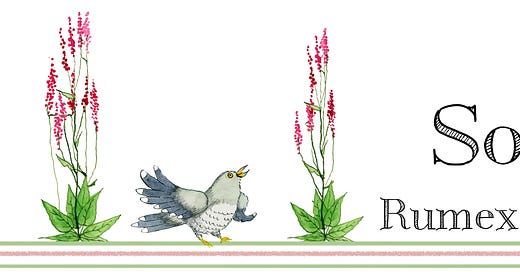



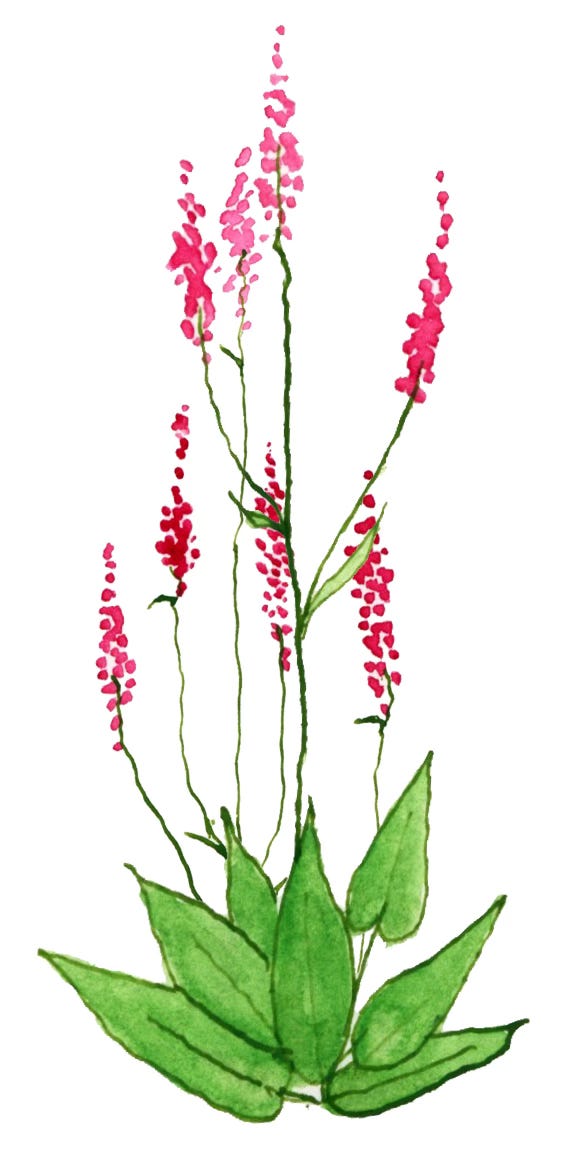

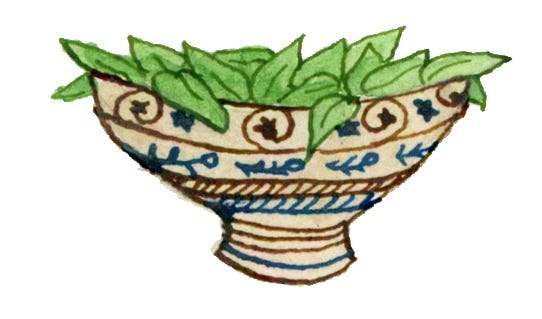

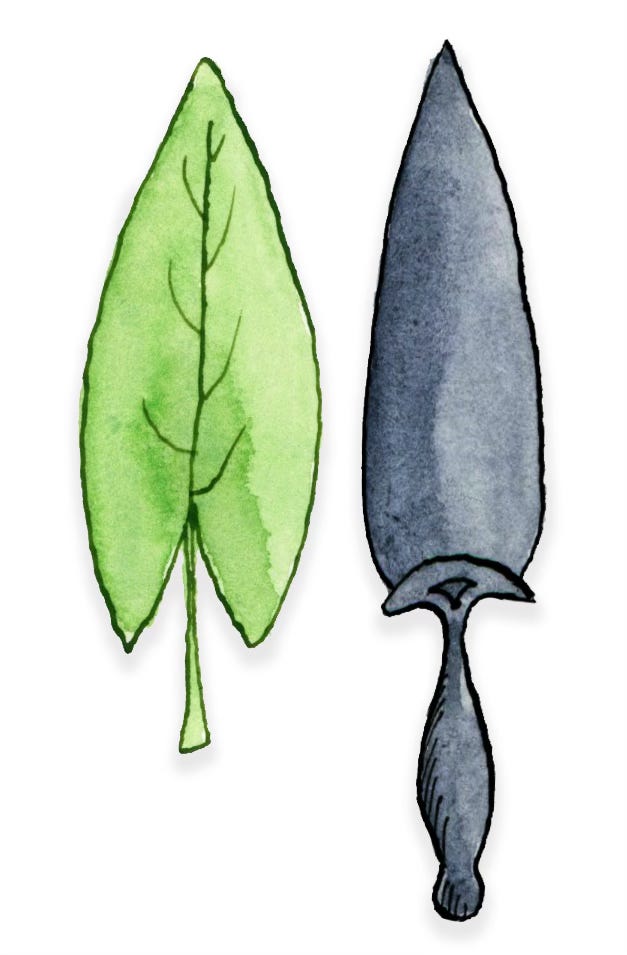
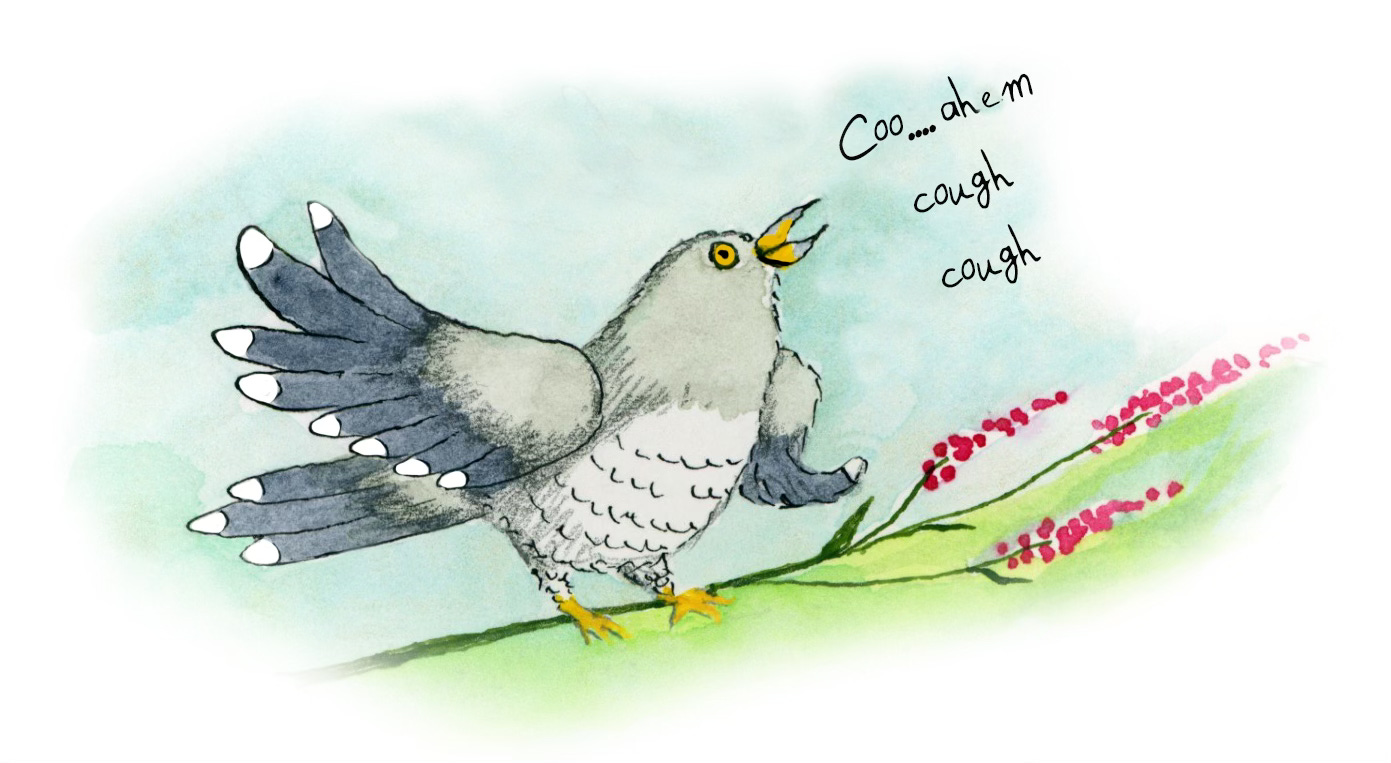

Interesting! We have a “wood sorrel” (also sour)here but it’s an oxalis. Looks like clover with a little yellow flower. Very tasty. My grandkids like it and so do my chickens!